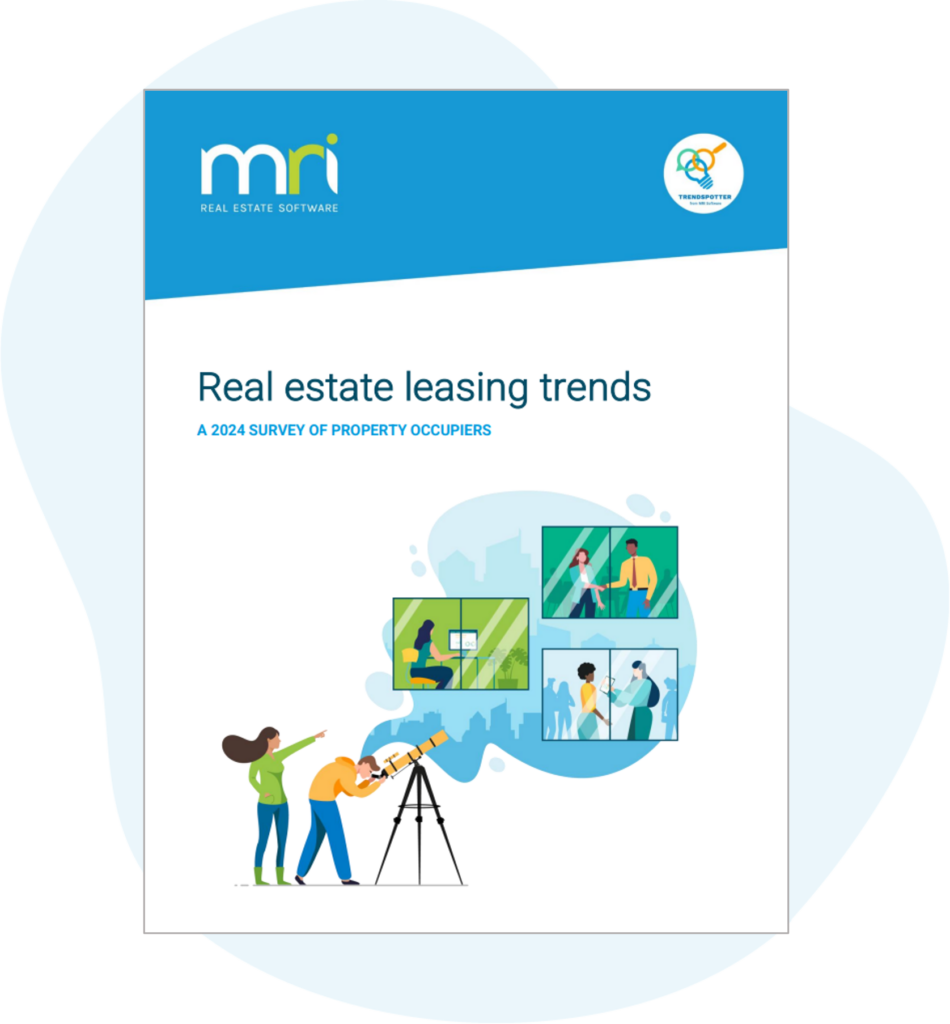Minimising the complexity of AASB 16/IFRS 16 compliance with support from a development of a new compliance module
Way back in 2006, the IASB announced the concept of a new project into lease accounting, and the implications for businesses with multiple lease holdings were potentially significant, but focused it seemed, on larger and publicly-listed companies.
Since January 2016, when AASB 16/IFRS 16 was officially issued, many more companies and organisations have been ‘caught out’ by the introduction of this new accounting standard, causing many to not be entirely across the needs. Many private companies and even Not-For-Profits, that were not expecting to have to adopt the standard have had to make the transition within the past year, when perhaps originally it wasn’t on their radar.
For many, the required scoping and documenting of their leasehold exposure has really opened their Finance Team’s eyes to the extent of what is now defined as “a lease”, and just how well the required financial data for these contracts is controlled and accessible. AASB 16/IFRS 16 has not become just another “Year-end Report”, but now regularly impacts the levels of Accounting Controls required as well as transforming their approach to the management of financial lease data.
For nearly two decades now, at MRI ProLease Express, we have been on a mission to make it easier for companies to better control their lease data and that is why we have committed the vast majority of our R&D Investment into the development of a new product module for AASB 16/IFRS 16.
Having worked closely with dozens of companies in this space and already spent nearly five years actively developing a solution for AASB 16/IFRS 16 that epitomises our vision of Simple Intelligence, our team has gained incredible insights into the practical adoption of the IFRS16 standards, as well as having been exposed to a myriad of questions amongst varying approaches by those companies who are adopting them.
The complexity of AASB 16/IFRS 16 has been widely underestimated
Without doubt, the greatest misconception companies have made in initially considering AASB 16/IFRS 16, is that it will be an annual calculation for statutory reporting purposes. So, whilst seen as laborious, it wouldn’t be something to be re-calculated too regularly. In theory, and if all leases never changed, then perhaps this would be true.
However, when more fully investigated by finance teams, it becomes clearer that in order to accurately account for movements within the company’s leasehold portfolio, the reporting for AASB 16/IFRS 16 becomes a far more regular requirement, typically to become a new part of the End of Month (EOM) process.
Suddenly, the realisation of the sheer amount of work that this new standard will now generate can be profound, and from our experience, even as significant as the realisation of the standards’ financial impact on the Balance Sheet! As a result, the idea of trawling through spread sheets of data, and manually developing formulas for each output, becomes very unappealing and for most modern and progressive finance teams, completely unacceptable.
In addition to a laborious and unregulated process for calculations and journals, the lack of visibility and accounting controls that typically exists around the financial lease data can result in the monthly data collation process being a far greater challenge than the reporting itself. Sometimes even the simplest of questions become the hardest to answer:
- Do we have all of the data that we need?
- Is the data correct?
- How do we know which leases have changed or been added?
- How do we know what might’ve changed for each lease?
The big data challenge
For those businesses where the calculation of an initial position for AASB 16/IFRS 16 has taken longer, on virtually every occasion this has been due to problems with sourcing the data.
For organisations with a small number of leases, fixed payments and/or little opportunity for any mid-term amendments, then the required data set should be fairly simple, however, these businesses are typically not the ones seeking compliance with International Financial Reporting Standards.
For larger and more complicated businesses, particularly those with large leasehold property portfolios, there is often a far greater disconnect between the internal ownership of this data and the Finance Team. They should have the current month’s rent, and perhaps the entire yearly forecast. But for all future lease years? All rent reviews, cash incentives, option terms? Almost certainly the answer they then realise is NO.
Thus, whilst the reporting standard sits with finance, the required data is being managed by the Real Estate Team, or even Legal. Furthermore, because the management of the data has primarily been for other purposes, the level of detail and accuracy possessed is commonly insufficient for modelling future financial liabilities, making detailed assumptions and accurately reporting for the company’s financial statements.
As a result, when fully considering the needs for AASB 16/IFRS 16, many Finance Teams discover that due to the lack of visibility and control that they’ve had, they’re working with insufficient and/or unreliable data, leading to the risk of inaccurate financial reporting, which is unacceptable.
Focus on simplicity and integration
It is well known that the best protection against “stale data” is for it to be continuously in use. When financial data, in particular, is regularly relied upon by the Finance Team, businesses experience a real uplift in the quality and integrity of this data across their systems, ensuring complete and accurate reporting and long-term reliability.
To ensure that data is continuously used, the ways in which that data is stored, structured and managed is paramount. It must be easily accessible, have appropriate controls and be reliable operationally and under audit. Furthermore, given the importance and complexity of AASB 16/IFRS 16, trying to prepare balance sheet reporting with non-integrated source data and manual Excel calculations is likely to compromise productivity, audit compliance and perhaps even the accuracy of company financial statements.
The best-practice approach is to implement one easy-to-use, highly-functioned and appropriately integrated system for the management of lease data and financial reporting. Such a ‘single solution approach’ ensures that the lease data required for AASB 16/IFRS 16 is available automatically, while also giving teams across the business:
- Visibility: If there is a change in the lease profile, cash flows or even Option status, to be alerted, but also have the power to drill down to see what has actually changed in the source data.
- Access: From a control and workflow perspective, there is no tedious monthly need to go and manually collate all of the new data, or survey the legal or property teams for any changes. The latest information is there and available, as well as alerting you if required.
- Accuracy: You’ll have the ability to ‘correct’ auditors, if certain data points have been mistakenly left out. (Our team has seen first-hand some Customers’ auditors make multi-million dollar mistakes using Excel, due only to errors in the manual entry of fragmented data. Landlord incentives, make-goods and CPI increases are the most common points of data omission in our experience.)
Purpose-built solution to ensure AASB 16/IFRS 16 compliance
In February 2018, after more than two years and over a half a million dollars in R&D investment, the first production version of MRI ProLease Express’ AASB 16/IFRS 16 solution, a development of a new compliance module for IFRS 16, was released.
With development of a new compliance module for IFRS 16, AASB 16/IFRS 16 reporting can typically be completed in a matter of hours, even for an initial position at transition. The simplicity comes from the alignment and integration of the core lease data, with the automated financial calculations and detailed reporting outputs.
It’s one secure controlled solution for managing the data, recording the business assumptions, and producing the required outputs. By combining automated lease tracking with proactive variance alerts and an auditable history for decisions and notes, development of a new compliance module for IFRS 16 ensures that the lease data required is:
- In view every month;
- Informing your team of where to review; and
- Delivering ‘push button’ data outputs for the production of journals
Ongoing improvement and development
Development of a new compliance module for IFRS 16 has naturally evolved since its first release. The early adoption and influence of customers, the release of updates and interpretations to the standards, real-time exposure to many complex lease scenarios and general usability improvements have all formed a part of MRI ProLease Express; continuous improvement approach to a new compliance module for IFRS 16.
In essence, rather than going it alone, in MRI ProLease Express, customers have the support of a partner who is committed to the ongoing improvement of their solution, by engaging both at a practical user level as well as maintaining engagement with industry expertise and oversight at a domain level.
In fact, the evolution of a new compliance module for IFRS 16 has even resulted in the use of the module by many customers for not only their real estate leases, but also their vehicle fleet and equipment leases, creating a single solution across the business for the many customers also managing AASB 16/IFRS 16 for thousands of non-real estate leases via MRI ProLease Express.
In most cases we have seen the adoption of the new compliance module for IFRS 16:
- Simplify compliance with the AASB 16/IFRS 16 Accounting Standard
- Ensure the accuracy and integrity of the core lease data for property, payment and business analysis purposes
- Transform productivity, with some companies transitioning from zero AASB 16/IFRS 16 reporting to a complete set of journals in just a matter of hours
Quite simply, in addition to the engagement of globally recognised consultants and formalised third-party testing to validate financial algorithms, development of a new compliance module for IFRS 16 has now been tried and tested by many companies, and their auditors across multiple regions, to fundamentally verify the ability to rely on MRI ProLease Express to simplify AASB 16/IFRS 16 reporting, by just getting it right.
For the many companies still yet to fully digest or adopt AASB 16/IFRS 16, their ability to make this transition will be made significantly harder by the likelihood of inaccurate and insufficient data, as well as the need to design and build the necessary complex algorithms that these new standards require.
Without the right system, the complexity of these new standards creates an additional risk of inaccuracy for financial statements, plus the likely cost of additional headcount. To do it a better way, the right way, reach out to MRI ProLease Express today.
“As a public company with over 120 property leases in multiple countries, managing AASB16 without MRI ProLease Express’, development of a new compliancemodule for IFRS 16 would be virtually impossible.
Their solution is both simple and powerful and the support and expertise that we have received throughout has been first-class.”
– David Speirs, CFO, Beacon Lighting (ASX: BLX)
Workplace
Software solutions and services for workplace management, lease administration and lease accounting.
Get a demo
CoreNet 2024 Global Leasing Trends Report
MRI Software partnered with CoreNet Global to uncover 2024 real estate occupier leasing trends and provide critical insights to guide you through the current and future state of CRE leasing. Building on previous surveys, the report analyses data from…
